This page contains affiliate links. We may earn money or products from the companies mentioned in this post through our independently chosen links, which earn us a commission. Learn More
 The Puli is a dog breed that originated from Hungary, also known as mop-dog, used for herding and guarding livestock. It is a small-sized dog breed at about 14 to 18 inches tall, weighing anywhere between 22 to 33 pounds. Puli has an average lifespan of 12 to 16 years.
The Puli is a dog breed that originated from Hungary, also known as mop-dog, used for herding and guarding livestock. It is a small-sized dog breed at about 14 to 18 inches tall, weighing anywhere between 22 to 33 pounds. Puli has an average lifespan of 12 to 16 years.
Sometimes called the Hungarian water dog, the loyal Puli also makes for an excellent companion dog, always putting their family first.
Let me answer questions you may have about this unforgettable breed.
Contents & Quick Navigation
Where are Puli dogs from?
Some historians believe that Pulik have been used as sheepdogs as early as 4500 BC. The breed’s name may have been derived from ‘puli hou’ or ‘pull hoi’, both of which mean ‘Hun destroyer’, in reference to the Huns that invaded Hungary. The term ‘Puli’ also means drover or one who drives cattle and sheep.
The Magyars are commonly credited for bringing these dogs from Central Asia to the puszta or grasslands of Hungary more than a thousand years ago. As early as the 9th century, the Puli dog worked on the Hungarian plains, herding sheep by running along the backs of the flocked animals.
Hungarian shepherds heavily relied on the Puli and another working dog breed, the Komondor, to quickly move flocks between locations and keep sheep and cattle safe at night. Both breeds have a similar outer coat of corded hair; these cords helped protect the dogs against harsh winters and attacks from wild animals.
This herding dog was considered a valuable possession among Hungarian shepherds, who were willing to pay the equivalent of a full year’s wages for a good Puli. Because of its intelligence and playfulness, the breed continued to enjoy immense popularity in Hungary until well after World War II.
These days, the Hungarian breed shows off its sheepdog heritage in the competitive herding circuit. Puli owners often enter their pets in dog shows to compete in agility, conformation, and obedience.
Dog owners love this herding breed for its outgoing nature and devotion to its family. You’ll never have a dull moment at home with this bouncy, brilliant companion dog.
Komondor vs Puli: what’s the difference?
Komondorok (the plural form of Komondor) are Hungarian work dogs and have an outer coat of naturally occurring cords of hair. Both breeds can also be challenging to train because of their independence and occasional stubbornness.
You’ll be able to tell the difference between the two herd dogs just by sight. The Komondor is like a big brother to the Puli, towering over the smaller breed by more than a foot and weighing four times as much. The Komondor’s coat is also always white.
Unlike the high-energy Puli dog, Komondorok have a tendency to be lazy during the day, thanks to their long history as nighttime guards for the flock. The Komondor can also be more territorial and dominant.
Is that a Puli or a mop?
Because of its coat, the Puli is a sight to behold. It can have two outer coat styles; while some are covered from head to tail in cords of hair, others have thick, fluffy brushed-out hair. Either coat gives the dog the appearance of a moving, breathing mop.
Puli puppies have fluffy hair until they turn 9 months old, when the hair starts to feel thicker and separates into clumps or mats. At this stage, you can choose between separating the clumps of hair into cords and regularly brushing out the hair to prevent cords from forming.
Beneath the wavy or curly overcoat is a soft, wooly undercoat. These dogs always come in solid colors of black, white, or gray. Some may also have brownish fako coats, which are similar in color to whole-wheat rolls.
The thick coat conceals a powerful body, with a strong neck and back. Despite their strength, full-grown Puli dogs remain compact,as mentioned above they measure 14 to 18 inches (35 to 45 cm) in height and weighing anywhere from 22 to 33 pounds (9 to 15 kg).
A coat of unique, hand-formed cords
The first clumps of hair on the outer coat appear as the Puli’s undercoat is shed. The dead undercoat separates into distinct sections held together by the wavy or curly strands of the overcoat.
The signature cords on the breed’s coat are a labor of love from its owner. Once natural mats form in your puppy’s outer coat, you can start shaping the cords by hand. The clumps must be pulled apart to the skin and twirled individually into cords.
You’ll have to repeat this separation process as long as it takes for your Hungarian Puli’s outer coat to be covered with cords, which are best kept half an inch to an inch thick. The cords’ ends must also be kept open so they can grow longer.
Breeders recommend regular baths for puppies during the cording process. Frequent baths will ensure that no dirt and debris are caught in the cords. The cords themselves are easy to keep clean, thanks to their wooly, dense texture and weatherproof qualities.
Fully-grown, these twists of hair cover the Puli’s entire body, even its face. Those gorgeous cords that reach the floor? They’re probably 4 to 5 years in the making. Don’t worry, though. Puli dogs can see clearly even through a fringe of corded hair.
What are Puli dogs like?
Its mop-like coat is not the only interesting thing about this Hungarian breed. These dogs have an outgoing, loyal temperament that endears them to many owners.
Self-confident Pulik will love being the center of attention of your household. They’ll have a fun-loving, playful nature, retaining some puppy-like traits even in adulthood. If brought up with kids, these dogs make for fun-loving playmates that never seem to run out of energy.
The Hungarian Puli is incredibly smart, and it’s not afraid to put its intelligence to use, even against its owner. This dog has a sense of humor, too, so don’t be surprised if it likes to play tricks on you and your family.
Of course, the breed retains strong herding instincts. Pulik will try to get you going in the direction they want by pulling on your clothes. In its downtime, this dog will love observing its surroundings and watching the world go by.
Even with their sense of humor and clownish ways, most Pulik are sensitive dogs. They bond so closely with their owners that they’re usually attuned to your emotions and moods. This empathy is why many of them today work as therapy dogs.
Are Puli good guard dogs?
Since its days guarding flocks of sheep in Hungary, the Puli has proven to be reliable at keeping its owner’s property safe. Its keen eyesight, acute hearing, and fast reflexes help it detect any unusual activity in your household.
Pulik also make for excellent guard dogs because they’re naturally wary of strangers. Using a loud bark, your dog will immediately let you know of potential intruders lurking around your home.
The best living conditions for a Puli dog
As a small dog, the Puli easily adjusts to homes of various sizes, whether apartments or houses with backyards.
However, the breed is usually happiest in houses with large fenced yards where they can run around to their heart’s content. If you have an apartment, don’t be surprised to see your Puli running laps around the living room or dining room.
Despite its love for wide-open spaces, the Puli is an indoor dog who will love spending time in the house with you. It will be happier in a large, fluffy bed than in a dog house out back.
The breed will also adapt to most climates, though these thick-coated creatures won’t be too comfortable in weather that’s too hot.
How much exercise does the Puli dog need?
Pulik are high-energy, high-drive dogs who need plenty of physical and mental stimulation. Make sure to give your dog at least an hour of exercise and play daily.
The Hungarian Puli is athletic and agile, so it will love doing physical activities that are similar to herding, like running or jogging. These dogs will also make excellent companions on hiking and camping trips. They’ll excel in canine sports, including herding, obedience, and agility.
Unless you want to spend the afternoon running after it, you want to keep your dog on a leash when you’re out. It has a high prey drive and will give chase to small animals if the opportunity arises.
Pulik also have an affinity for jumping, a throwback to its days of jumping on the backs of flocked sheep to steer their direction. Make sure your yard has a fence at least 6 feet high to keep your dog from wandering away.
You’ll want to take it easy on the exercise while your dog is still a puppy. Hold off on physical strenuous activities like hiking and jumping until your pup is at least a year old and its growth plates have fully fused.
Toys will help this active dog work off its excess energy while indoors. Puzzle feeders and interactive toys mentally stimulate your pet and keep it occupied while rewarding it for its hard work.
Is the Puli dog difficult to train?
Thanks to their herding nature, these dogs are bred to be independent and do not give up control easily. You may even find your Puli trying to make your decisions for you during playtime or training.
As we said before, this breed can be prone to resentment. Make sure you can assert authority as a pack leader while being firm and fair. Never resort to aggression when training your Puli.
Eager to please their owners, Pulik learn good behavior more quickly with positive reinforcement. Make sure to reward your dog with treats or praise when he obeys commands. Keep training sessions short and fun so he won’t get bored.
It’s best to start training puppies at a young age. You can enroll your puppy in obedience classes as soon as it is 10 to 12 weeks old.
Early socialization is recommended because these dogs aren’t particularly friendly to strangers. Once it learns to discern a legitimate safety threat, you’ll have a much easier time living with the breed.
Crate-training your Puli dog is also beneficial. First, it curbs your dog’s tendency to be territorial. Proper crate training will also keep your pet calm and happy during trips to dog shows or the groomer, plenty of which may be in your future.
As a vocal breed, Pulik like to bark to alert their owners of potential threats. The good news is that with enough training, you can control your dog’s excessive barking.
Keeping your Puli clean and healthy
Even with its thick coat and active nature, this breed needs only a moderate amount of maintenance. Considered by many to be hypoallergenic, Pulik are low shedders. The dogs’ shed hair gets caught in the coat’s cords rather than falling to the ground.
Giving the Hungarian Puli a bath
Generally, Pulik will be fine with one bath every month or two. However, if your dog loves to play outdoors and roll around in all sorts of unsavory stuff like mud, more frequent baths will be needed to keep its coat clean.
Don’t be intimidated, though. Cleaning those cords is just like washing a sweater. The easiest way to do it is in a tub filled with two inches of warm water and about a cup of diluted dog shampoo.
Soaking the Puli’s coat can be challenging because of its water-resistant qualities. It may help to use a sprayer to soak the cords all the way through. Scoop the diluted shampoo onto your dog’s back and massage it into his skin. Squeeze the shampoo into cords, making sure each cord is thoroughly cleaned and scrubbed if needed.
A brushed-out Hungarian Puli needs a gentler bath. Try not to scrub shampoo into the brushed-out hair, as scrubbing could cause matting. Whether your dog has cords or not, carefully wash the hair on its head and around the genitals.
Make sure you thoroughly rinse off your dog; leftover shampoo makes its skin itchy, resulting in irritation and scratching that could make the cords fall off. Rinse the coat until the water running from it is clear. You may have to squeeze the cords to make sure no suds appear.
The challenge comes right after the Puli’s bath. Squeeze out excess water from your dog’s fur and put him on a towel to drip dry. A brushed coat can be blown dry after an hour of dripping.
For corded Pulik, the drying process can take several hours more. Wring as much water from the cords as you can and allow your dog to drip dry. Some breeders recommend using sweatshirts to soak up the moisture from the cords.

Imagine trying to get all those cords dry.
Time the bath so the drying process takes place overnight. Put your Puli in a playpen and point a couple of fans in his direction so that a warm breeze is blowing over him. If there is any dampness in the cords the morning after, put your dog back in front of the fans until he is completely dry.
Thoroughly drying the cords prevents mildew, which can cause the cords to fall off and your dog to smell bad.
Do Puli dogs smell?
A Hungarian Puli may look like a mop, but that doesn’t mean it smells like one. As long as they’re groomed and bathed regularly, these dogs have no offensive odor.
Pulik will usually only have an undesirable smell if they have mildew in their cords or if they’ve been rolling around in something stinky outdoors. Infections in the ears and skin may also affect the way these dogs smell.
Grooming a Puli – can you do it yourself?
Properly grooming your dog is not as difficult as you would think, even if it has a corded coat. Cords are actually easier to keep clean because dirt and debris can’t penetrate the cord’s surface. You don’t have to worry about matting with a corded coat either.
Once your Hungarian Puli’s coat is fully corded, it’s just a matter of splitting cords that are becoming too thick and removing loose hair from between the cords. If you find any mats in your dog’s coat, separate them into cords as soon as you can. Make sure each cord has an open, pointed end to encourage growth.
Grooming Pulik with brushed coats
A Puli without cords needs a little more maintenance than its corded brothers. You’ll have to remove various bits of debris that may have been caught in the coat between grooming sessions.
Brush your dog’s coat at least once a week to prevent matting and preserve its shine. Handle the coat in layers to make grooming easier and don’t forget to brush the hair between the legs and in the armpits.
You can also lightly mist the hair with water to keep the strands from breaking as you brush them.
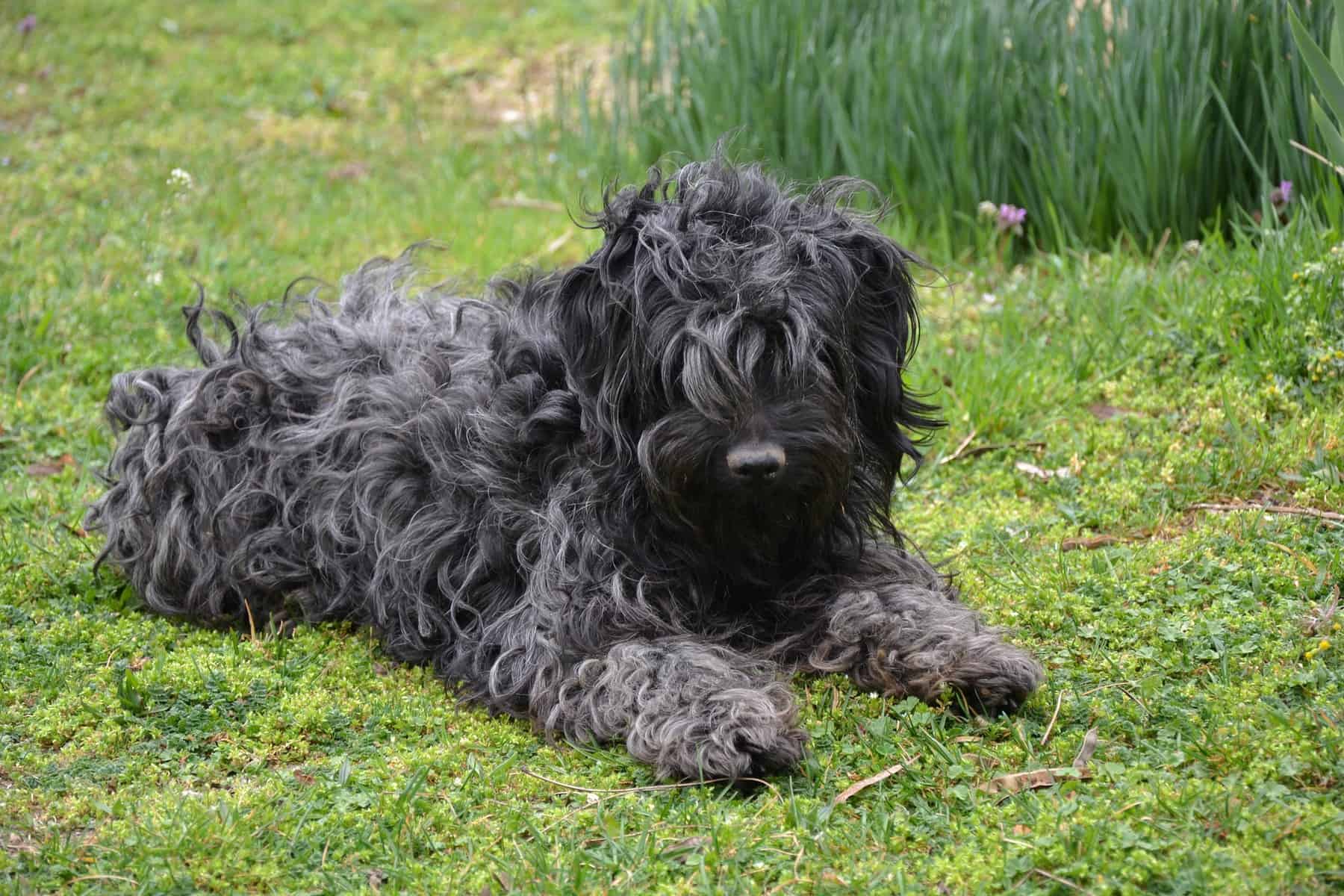
Should you trim a Puli’s outer coat?
Whether the coat is corded or brushed out, trimming it helps improve the dog’s hygiene. Make sure to cut cords at an angle to keep their ends pointed and open.
Trimming hair from the Puli dog’s stomach and around the genital area prevents debris and urine from accumulating in the hair. You can also cut hair at the bottom of the feet and between the pads to avoid matting.
And if you’re tired of having to clean your dog’s face after meals, you can trim his hair to the end of his nose.
If you’d rather not trim your its coat, you can just tie your dog’s cords into sections using bands, keeping cords away from the face and genital area.
What do Puli dogs eat?
You should feed your Hungarian Puli 1 to 2 cups of high-quality dry dog food each day. Divide this amount of food into 2 meals spread out throughout the day. Encourage healthy eating habits in your dog by measuring out the food twice a day instead of just leaving the food out all the time.
Like other active dog breeds, Pulik need dog food that has at least 25% protein to keep their muscles and bones strong. Food with a high amount of fat – around 15% – also ensures that your dog can maintain its high energy levels.
Do Pulik suffer from any health issues?
As mentioned in the first paragraph this is generally a healthy breed with a life expectancy of 12 to 16 years. However, puppies should be cleared for various health conditions such as von Willebrand’s disease, hypothyroidism, and thrombopathia.
Bone problems such as hip and elbow dysplasia and patellar luxation may also be an issue, especially given the breed’s activity levels. Screening for eye conditions like cataracts and progressive retinal atrophy will also be helpful.
Puli dogs are also prone to overheating because of their thick coats.
How much are Puli puppies?
Puli puppies are in high demand today because of their unique, endearing appearance. Breeders may charge between $1000 and $1200 for each puppy.
Make sure you get your money’s worth by choosing a reputable breeder. Good breeders will be able to present health certifications to assure you that your puppy is healthy. Ask to meet at least one of its parents to find out if the Puli pup has a temperament you’re comfortable with.
The following breeders are affiliated with the Puli Club of America:
- Piroska Pulik (Texas)
- Vadrozsa Puli Kennel (California)
- Moonglow Pulik (Maryland)
You can also find many Puli dogs for adoption all over the country. This is a good option if you don’t have the time to train a puppy.
Breeds like the Hungarian Puli
Puli vs Bergamasco
The Bergamasco was originally used for herding in Bergamo, near the Italian Alps. Like Pulik, the Bergamasco is a kid-friendly dog that sheds low amounts of hair from its corded coat.
Puli vs Border Collie

Pulik and Border Collies are very friendly breeds that will fit right in with highly active families. Border Collies are used as herders, too, so expect them to be a little bossy.
Puli vs Poodle
Few dogs are smarter than Pulik and Poodles. The breeds are also known for their patience with kids and other pets and ability to focus on a job.
Puli vs Pumi
The Hungarian Pumi is considered to be the result of breeding the Puli with French and German herding dogs. Like the Puli, the Pumi is independent but obedient and eager to please.
Puli vs Spanish Water Dog
The Spanish Water Dog almost looks like a short-haired cousin of the Puli. Both breeds are reliable guard dogs that don’t hesitate to bark at strangers or perceived threats.
Is the Puli the right dog for you?
Pulik are, first and foremost, working dogs, so they’re happiest when performing a task set by their owners. The breed’s herding instinct is so strong that it will try to herd you and your family.
The Puli is a great dog for your family if you’re looking for a playful pet with a sense of humor. Even just looking at its long, corded coat will lift your spirits.
However, training these dogs can be a challenge because of their independence and disdain for repetition. As a high-energy breed, Pulik will also need plenty of physical and mental stimulation daily.
Leave a comment if you’re ready to welcome a Puli into your home!

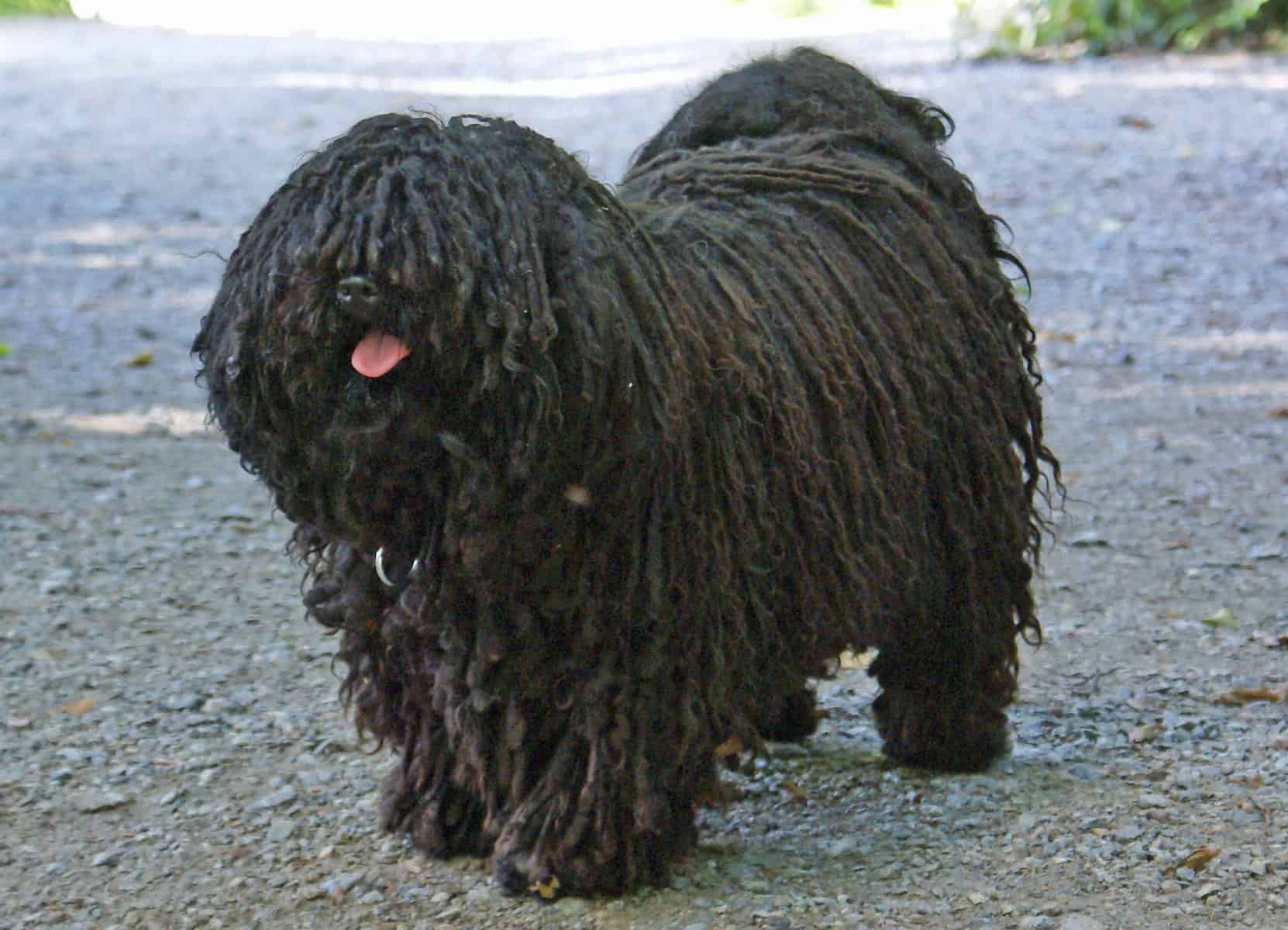

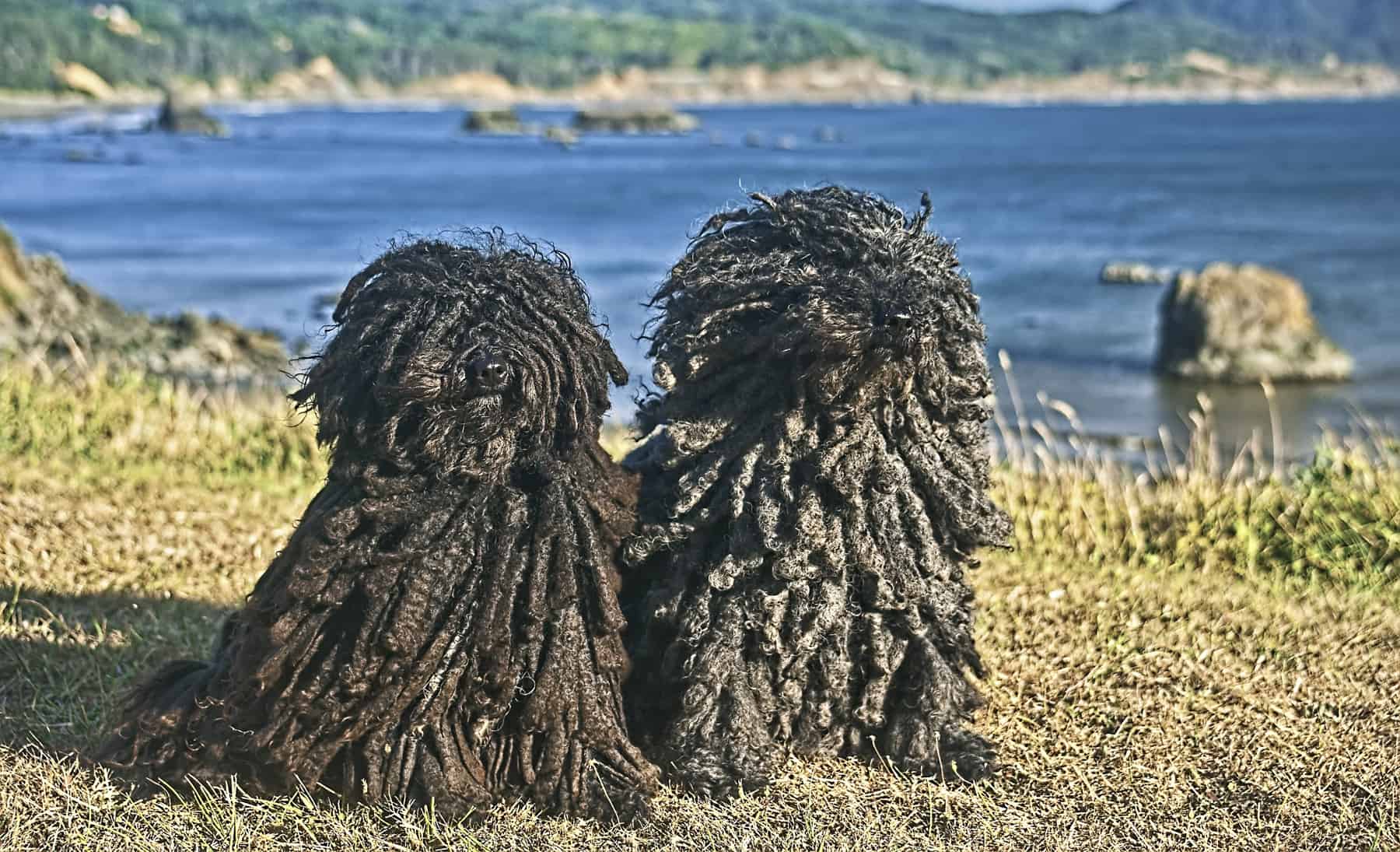
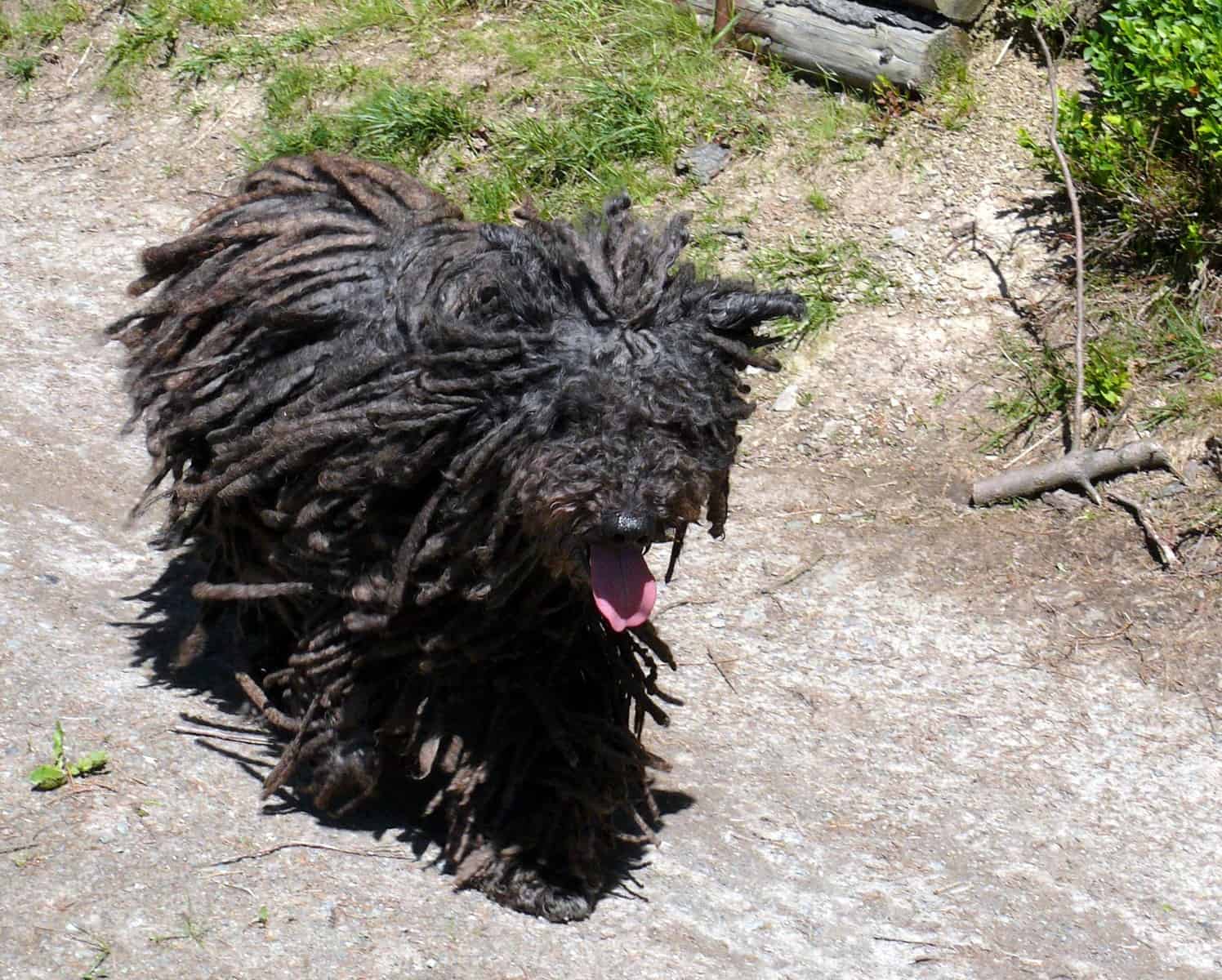
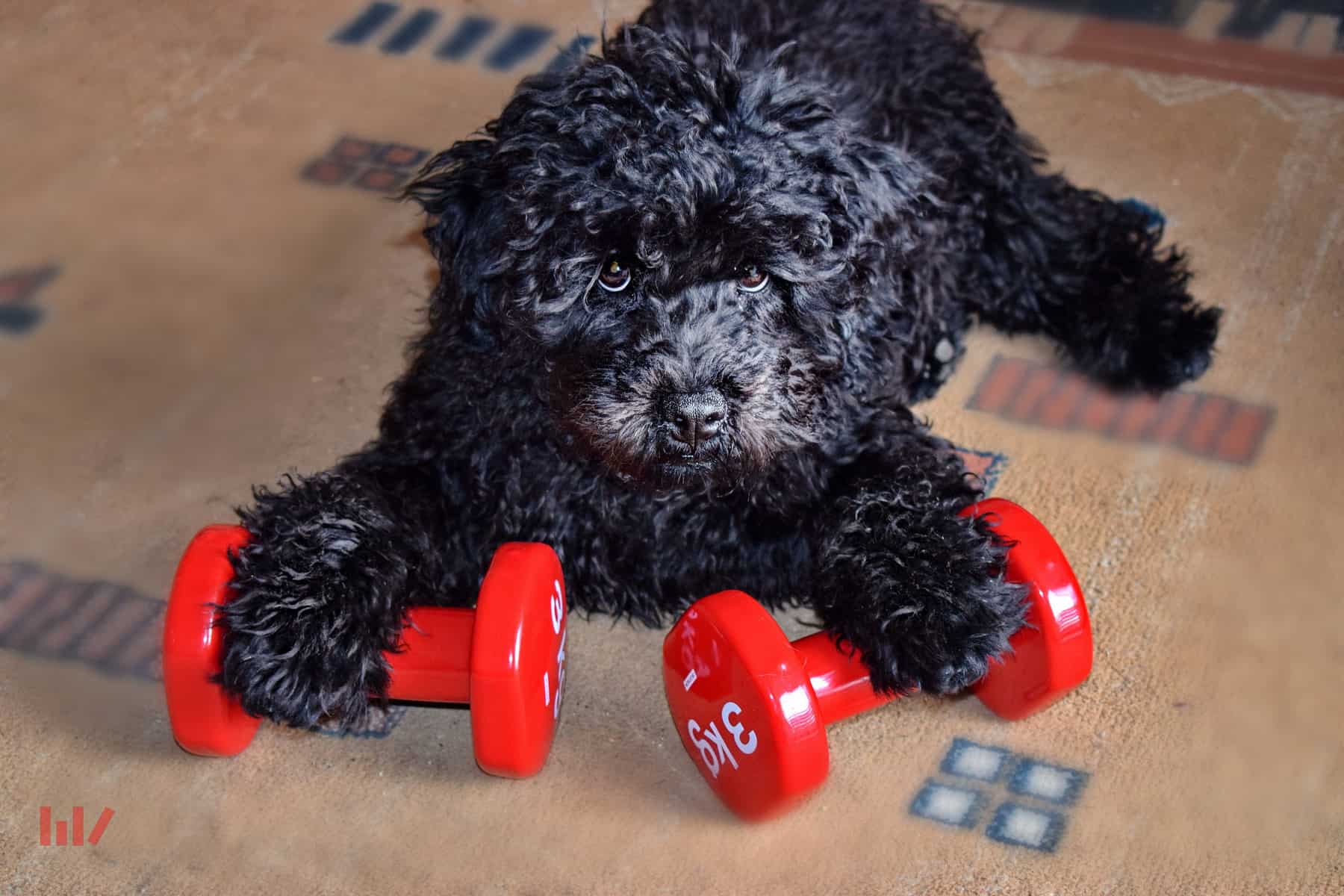
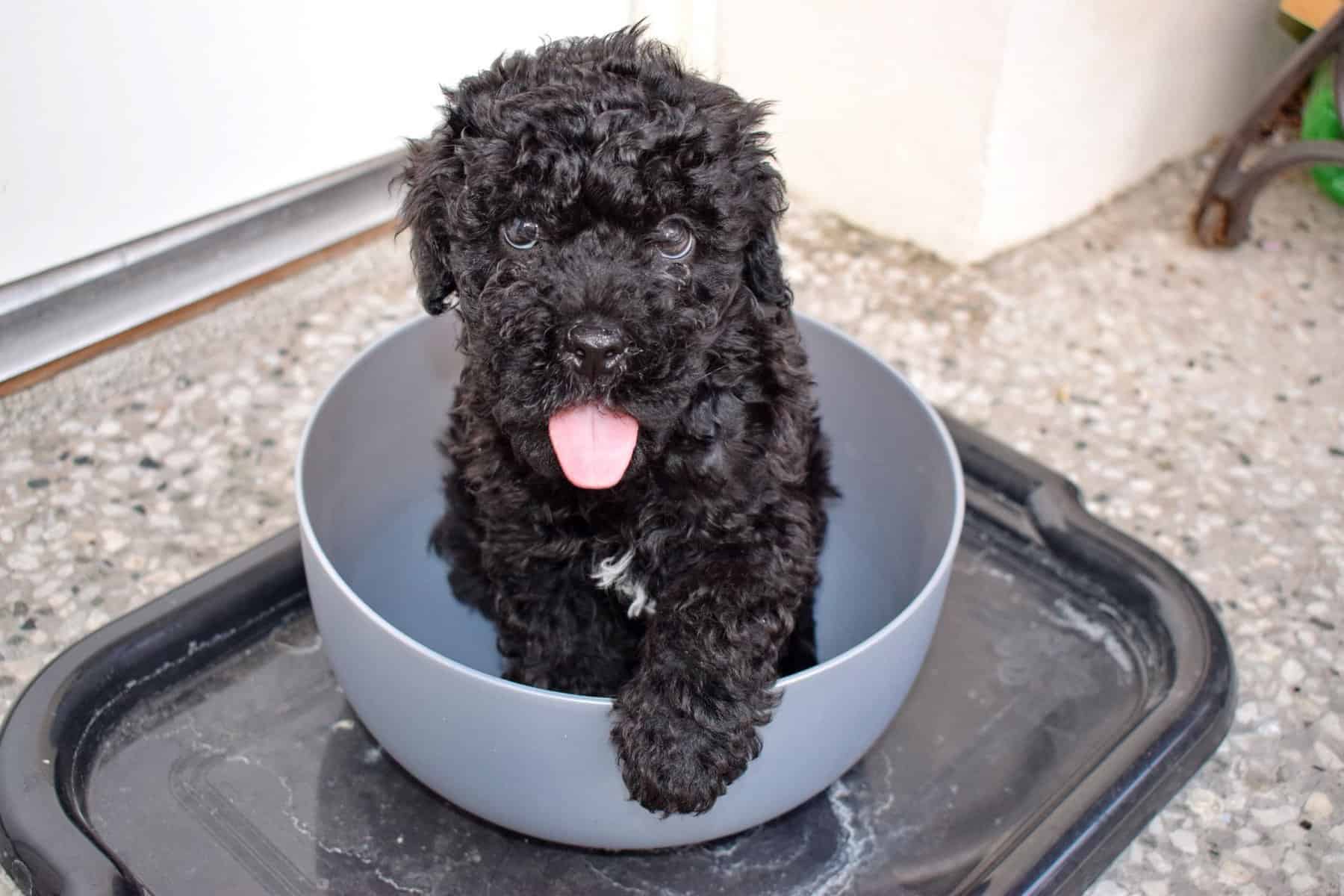
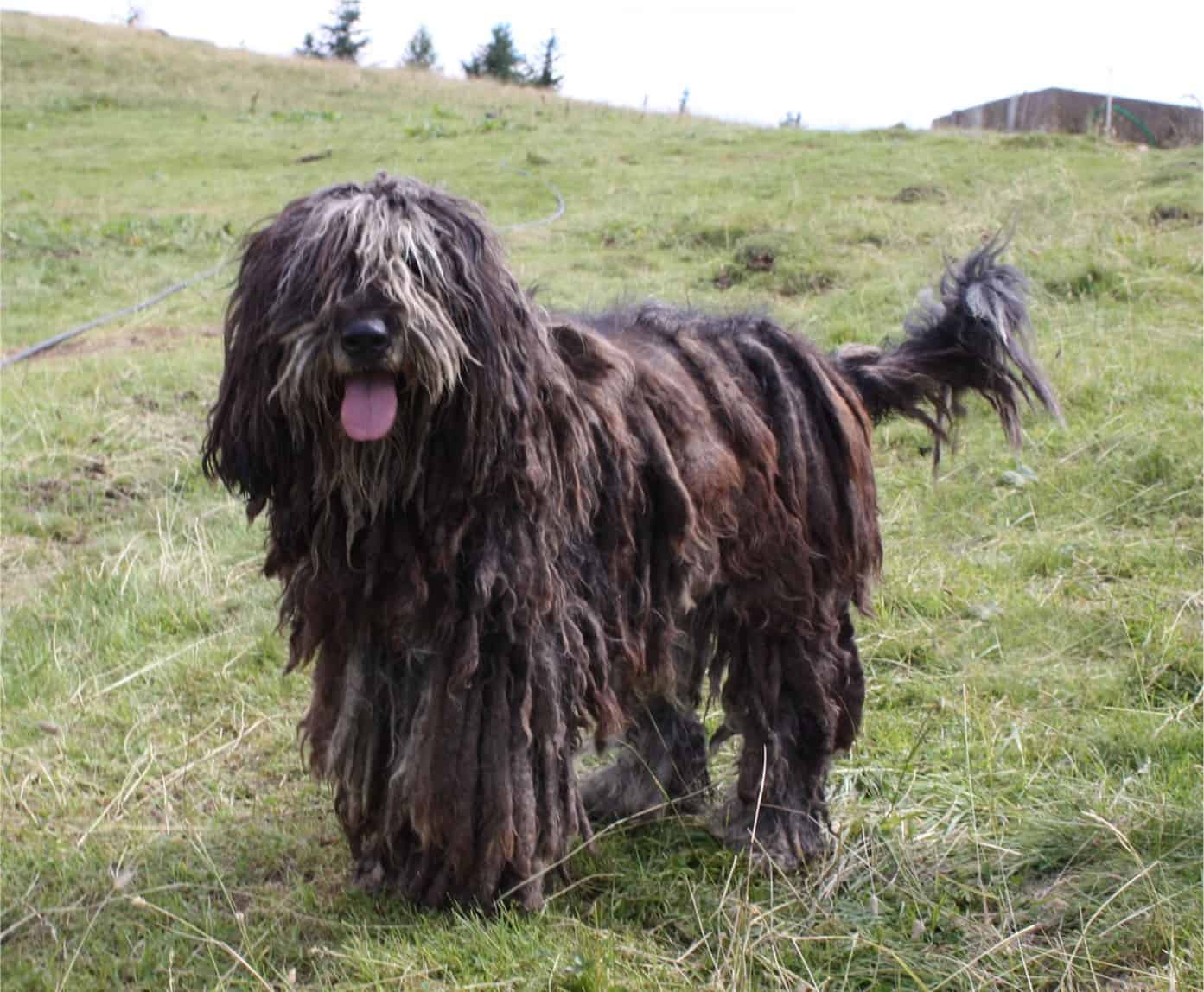

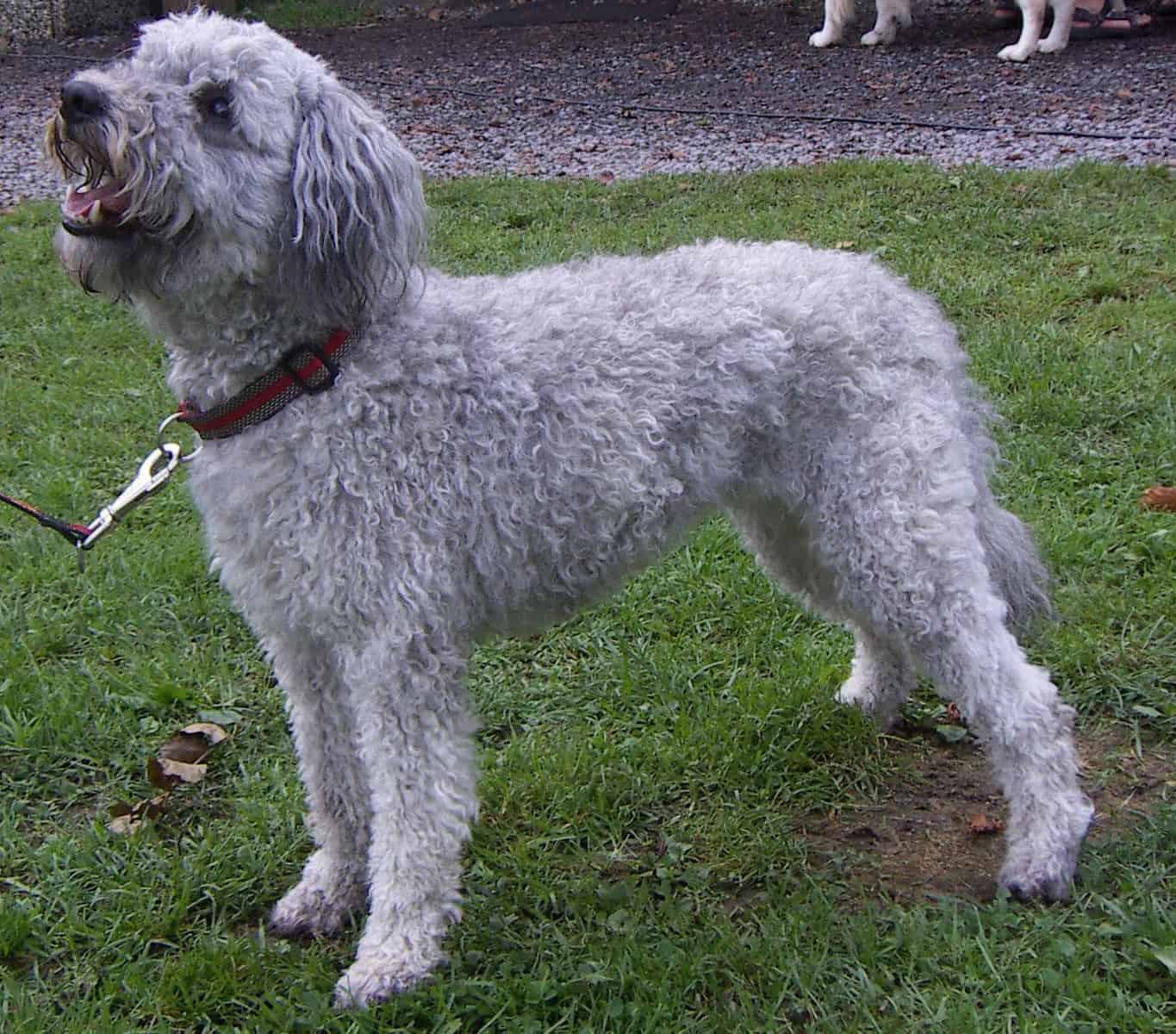
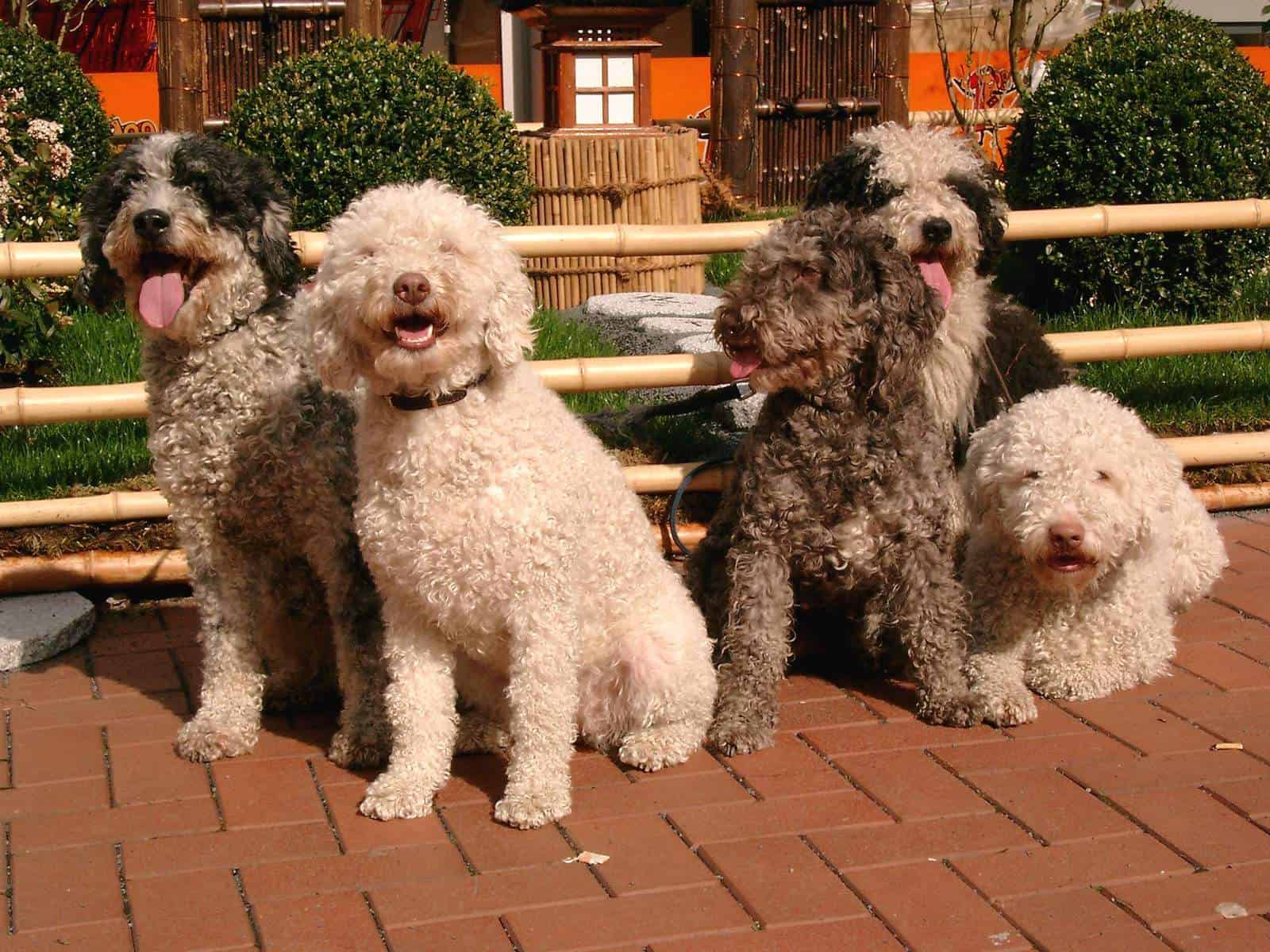
Leave a Reply